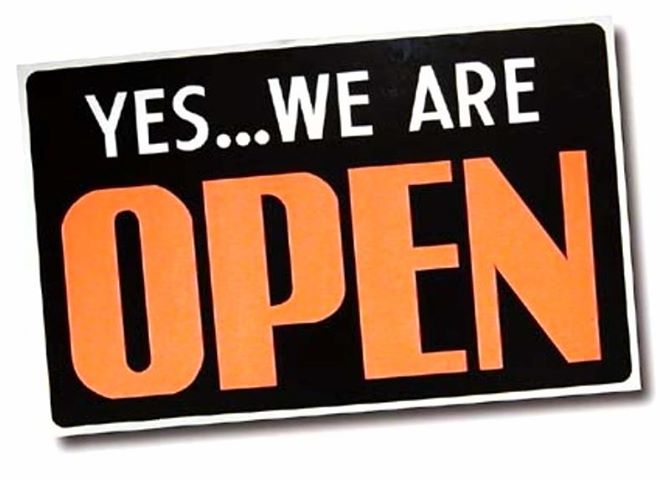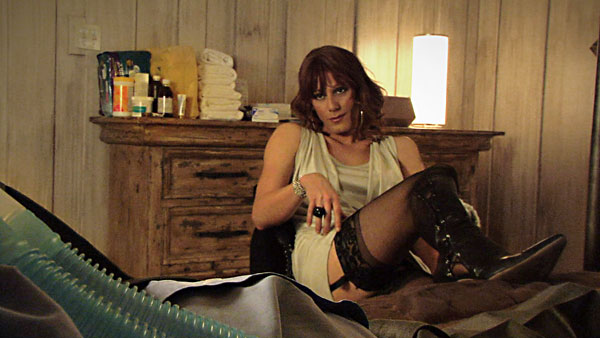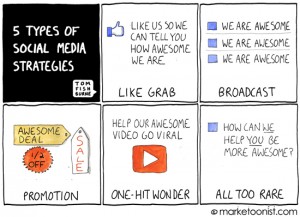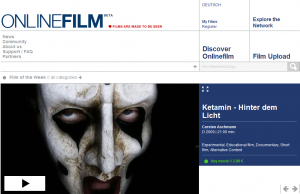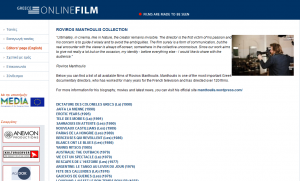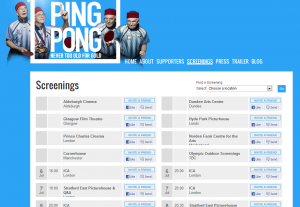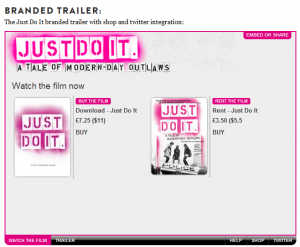
Finding distribution for the NC-17 equivalent film FOURPLAY
Today we have a guest post from filmmaker/educator Kyle Henry
Someone told me years ago that sex sells. Unfortunately, when I started making my anthology of short sex tales feature FOURPLAY four years ago, I thought that if a little sex sells then A LOT of sex would REALLY sell. Although the director side of my brain was motivated by a lot of high-minded reasons (e.g. showing sex as a positive force; providing understanding for characters participating in “deviant” sex acts; rescuing cinematic sex from titillation for catharsis), the producer side of my brain thought that by providing a product that would fill a need (e.g. an adult explicit film about sex that isn’t porn) somehow axiomatically would pull off a hat trick of making a profit AND getting away with subversive cultural critique. Well, we’ll see about that later part because just finding distribution has been a long and winding road depending almost exclusively on our persistence and ingenuity. Both were needed to prove the film’s potential to a very risk averse market for narrative NC-17 equivalent films dealing with sex even in our libertine digital age.
We didn’t start out five years ago making FOURPLAY thinking this would be such a struggle. I’ve always been interested and motivated to tell stories that challenge dominant frameworks of understanding. It’s the old activist in me still rearing its authority challenging head, but I thought that our four tales, which were mostly comedies, would hit that sweet spot of entertaining subversion. First word of warning: be wary of thinking your milieu of friends is representative of the general public as a whole.
Turns out, I live in a bit of a freak bubble. Now, there’s nothing wrong in making your work for yourself and your friends, just try to be aware how large that base is and don’t fool yourself that everyone is going to love your gang-bang heretical bathroom farce (e.g. our Tampa segment) or your cross-dressing sex-worker meets quadriplegic man for spiritual union melodrama (e.g. our San Francisco segment). I was very lucky to find grant money from the Austin Film Society, the wickedly funny producer Jason Wehling who likes doing things on the very cheap, and support from patron angel executive producers Michael Stipe and Jim McKay, who lent monetary and name support to the project via their C-Hundred Film Corp so we didn’t come off as complete yahoo wackos. Second word of warning: if you’re going to make a subversive work that will challenge the body politic and marketplace, make it on the cheap! All of these factors, plus the extreme desire to never again dip into my credit cards to make films, lead us to keep the budget under six figures, which gave us the ability to be not too desperate and come up with alternate strategies when hit with the brick wall of distributors saying “no thank you.”
Well, we were a little desperate in the beginning or perhaps a little too “creative” in our distribution thinking. There is a distributor out there who will go unnamed whose major selling point to filmmakers is a transparent “back-end” for their on-line sales of both DVDs and streaming content. That means when someone buys your content, you instantly see the sale by logging into their producer portal. We had the “clever” idea of releasing three of the four shorts that comprise FOURPLAY at both festivals and online as we finished them, with the idea being we’d make a little scratch along the way of production.
Production of the four shorts was strung out over the course of two years, basically whenever I had breaks from both teaching and editing, which I do also concurrent to directing to make a living because I don’t have a trust fund. Third word of warning: if you want to make subversive independent cinema in America have other skills that pay the bills or have a trust fund. No one that I know who is making this kind of work (and I know A LOT of filmmakers) is making a living exclusively from their directing projects.
Getting back to this unnamed distributor. After we finished the first short, our San Francisco sex-worker segment which premiered at Outfest in 2010, we signed up with this distributor and started streaming the segment. It was gratifying to see the hundreds of sales rack up on their “open architecture” site, but it was frustrating and irritating beyond belief never to get a check from them. One quarter, then two quarters went by with no payment. Emails and letters were sent, never to be replied to on their part. Finally, I had to get a lawyer friend involved, who luckily I met after making Room in 2005 and would only charge me poverty charity rates, but I still sunk around $500 that I didn’t have into legally harassing said distributor to get first payment and then rights back to the project when they never paid up and were flagrantly in breach of contract. Fourth word to the wise: have an entertainment lawyer friend!
Turns out, this distributor had not paid a lot of people. One filmmaker friend of mine literally had to march into their NYC offices and camp out in their lobby, refusing to leave until he got a check from them, or so the story goes. Fifth word to the wise word: always ask your filmmaker/producer friends for the straight dirt on a potential distributor before signing a deal. I wish we had done more research before falling for their “because you see it on our site you’ll definitely get paid” baloney. Digital transparency doesn’t equal material cash.
The second segment, our gang-bang farce in Tampa, hit the festival jackpot of premiering both at Cannes’ Directors’ Fortnight 2011 and Sundance 2012. This raised the project’s artistic street cred, but … as our most explicit, outrageous and heretical segment, I think it scared off any distributor that might have been attracted by those festival laurels. It has a lot of cock on display, fake prosthetic cock, but still enough showing to scare both the horses and the largest and most profitable online distributor of streaming content, who will also go unnamed. Luckily we have a friend inside said organization who took a gander at the film and told us straight out “too much cock” so we didn’t waste time or money trying to alter the work or submit via an aggregator.
The final anthology feature with all four segments premiered at Frameline last summer, and again I threw a final curve ball to another potential type of distributor, those who specialize in LGBT content, by including a “straight sex” and a lesbian bestiality segment. Granted, in the “straight” segment a couple conceives in a gay video porno arcade, and our bestial segment is more about sublimation than doing the nasty with doggie, but it didn’t help anyone narrow down who would be interested in our film. It’s seems we had something to both interest … but also offend everyone. So, another string of no thank you’s from everyone, and I mean everyone, as we played the festival circuit throughout the summer and fall in 2012.
By early fall, I knew if anyone was going to want to see the film, we had to find a cheap way of getting some reviews and attention to back up our assertion that the work would gain enough publicity and digital markers to direct traffic to at least our own DIY efforts (e.g. making a self-produced DVD available off our site, streaming via Distrify, et al) … but just maybe one of those no’s would become a yes. Going back to my activist days, I hired two former student interns to put together a database of every independent cinema in North America that had screened NC-17 content in the last few years. We then sent out e-mails to around 300 theaters, followed up with phone calls, mailed press-kits/dvds to 100 theaters who expressed interest, and persistently bugged for over five months a narrow set who didn’t say no out-right to end up with the twelve who screened the film either as full week (e.g. Austin’s Alamo Drafthouse, Denver’s Sie Film Center), multi-night (e.g. Portland’s Clinton, Seattle’s NW Film Forum, Chicago’s Siskel) or one-off runs (e.g. LA’s Egyptian, NYC’s LGBT Center, Longbeach’s Art Cinema). Since all prints were digital, I either delivered on Blu-Ray, DCP or QT file, all generously discounted by a very cheap institutional FedEx rate, one of the perks of academia. Finally, my partner Carlos Treviño is not only the brilliant writer of three of the four shorts, but is also a talented graphic designer who designed not only our DVD case but also our web-site, based on a great (and highly discounted) poster designed by filmmaker/designer Yen Tan. I’m also an editor by trade, so I designed the DVD. Sixth word: directors, have some skills and partner up with people with skills beyond directing! Doing everything in-house is A LOT cheaper than hiring a bunch of free-lancers. In all, we spent around $15K to do our limited theatrical and first batch of 1,000 DVDs, which also includes the cost of me traveling for Q&A’s to all twelve venues.
One of the biggest line-items was hiring a real publicist for theatrical, Matt Johnstone, who also publicized the festival launch of both the San Francisco segment at Outfest, the Tampa segment at Sundance and the final feature at both Frameline and Outfest in 2012. Matt was with the project for almost three years from that first festival launch and became quite invested in selling the project. We wisely chose Austin, my former hometown, as the site to launch our theatrical tour. Seventh word: build from your base, which doesn’t have to be NYC or LA. I got the idea from the way Rick Linklater built distribution for both Slacker and many years later Bernie. By opening in Austin, we got both huge feature articles in both the daily and weekly, but also great reviews (not a guarantee, but I was thankful) and additional TV and radio interviews. It was about as saturated of media coverage as we were ever going to get and it paid off not only with a modest box-office to help immediately repay some of the debt I had incurred, but also we instantly showed up on Rotten Tomatoes with two boffo reviews!
This is where persistence comes into play. Everyone told us that doing theatrical was stupid for a no-budget sex-film, but in this day and age you still need reviews and digital ink from reputable sources to get anyone to want to see your film on whatever platform you end up on. I couldn’t blow a lot of money on it though. Filmmakers routinely spend $30- $50K hiring a booker, paying to four-wall and hiring a publicist for LA and NYC markets only for the privilege of reviews. I did this in minor-markets for a third to a fifth of that cost to accumulate markers from decent sources, although not the NY Times, but there’s no guarantee the Times would’ve liked the film anyway. These great reviews attracted the attention of a person in the DVD division of TLA Releasing, one of those distributors who said no last year, but because the film was proving itself in the market-place of ideas, now was interested in re-selling our DVD. Because it cost them nothing to manufacture, and no advertising on their part, we were able to negotiate a decent straight up purchase of a sum of DVDs that instantly repaid me what I spent to manufacture the first 1000. Up on their site, pre-sales were available before the end of our theatrical, so press attention continued to drive up sales, allowing us to sell them another batch of DVDs that now has put us into profit on the DVD before its official release date. That certainly wasn’t the case for my first feature ROOM’s DVD deal. Finally, I think it just made sense for TLA, one of the major distributors of LGBT content, that the film was getting spotlighted for it’s LGBT boundary pushing creds and whatever negatives there were with varied content wouldn’t undermine the major critical take-aways they could sell.
Finally, our publicist came up with the great idea of selling TLA on VOD rights also, since we were doing a press-release for the DVD launch and all traffic could be directed to one site. Again, this was a win-win situation for the distributor, as it required almost no work on their part, guaranteed sales, and provided us with the legitimacy of having a one-stop-shop on a press-release so sales could be maximized through focusing on one link in reviews instead of confusing consumers by sending them to multiple platforms. The legitimization we earned through good press during our limited theatrical lead to confidence being built that there actually was an audience for our weirdo film and gave everyone publicity ammunition to prove this assertion. No one was going to make this happen for us, we had to do this ourselves, and that’s my Final Word of Advice: DIY is here to stay for independent filmmakers.
When I first got into Sundance and Cannes in 2005 with my feature Room, I thought I had “arrived” and that upon being purchased by an international sales agency the film would sell itself. Although Celluloid Dreams poured a decent amount of money into sales, publicity and advertising to sell the film to various markets, the experience taught me that your job as a filmmaker is to CONSTANTLY sell your film once its made, no matter who picks it up or in what form for distribution. Distribution and sales companies are like roulette tables. They put down many chips on the table and if the ball lands on a number, all the other numbers lose, and the company will naturally follow a winner to the exclusion of all the “losers.” You want your film to win by being seen and, ideally, also make back a bit of you and your investor’s money. By keeping my production costs low, but producing my work with a combination of grants, crowd-source funding, and small investments from what I’d deem as “patron” investors who are far more interested in whatever “cause” my film is promoting than in returning a profit, I had the flexibility to be persistent.
That persistence was also fueled on the cheap, with: dogged interns who gained valuable insight into the distribution process while not breaking my bank; through a long six-month booking process that allowed said interns to work for cheap because it was only part time while they worked their real jobs to survive; through my academia network, which built relationships with presenting non-profits in every market to build audience and outreach for discussion on issues surrounding sexuality just like a doc filmmaker would organize; and through building long terms relationships with professionals who are also friends, like our publicist, our producers and my lawyer, who stick with me and the film on bargain rates because in some way they support me and the work as a team.
This has been the real hat trick, not only finding distribution and some sort of on-line home for an NC-17 equivalent film, but continuing to build long term relationships with other creatives who might be down for yet another subversive adventure when the next film inspiration strikes.
FOURPLAY is now available on DVD/VOD streaming from TLA here http://www.tlavideo.com/gay-fourplay/p-350944-2
FOURPLAY official web-site http://www.fourplayfilm.com/
Kyle Henry is a filmmaker, editor and educator. His narrative feature Room debuted at Sundance and Cannes’ Directors’ Fortnight in 2005. He is also the editor of the Emmy Award winning 2011 documentary Where Soldiers Come From, as well as this year’s SXSW premier doc Before You Know It. He currently teaches film production at Northwestern University.
Sheri Candler May 15th, 2013
Posted In: Digital Distribution, Distribution, DIY, Film Festivals, Marketing, Publicity, Theatrical
Tags: Alamo Drafthouse, Art Cinema, Austin Film Society, C-Hundred Film Corp, Cannes, Carlos Trevino, Celluloid Dreams, Clinton, FOURPLAY, Frameline, Jason Wehling, Jim McKay, Kyle Henry, LGBT, LGBT Center, Matt Johnstone, Michael Stip, NC 17, NW Film Forum, Outfest, Room, sex positive, short films, Sie Film Center, Siskel Film Center, Sundance, TLA Releasing, Yen Tan
Considerations BEFORE signing over your film’s home video rights
Although DVD distribution revenue has by all accounts declined significantly since the start of home video and the development of the format, most film distributors still distribute DVDs. Sales are down, but there are profits to be had for more commercial or popular fare that is strongly supported with marketing spend, whether studio, indie, or niche.
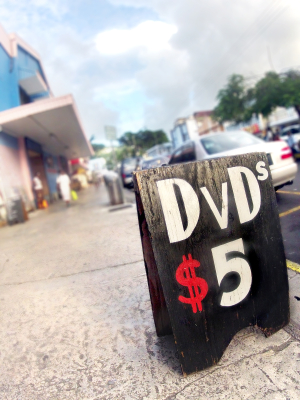
We always advise filmmakers to conduct Direct Distribution of DVDs to their audience even when we or someone else is handling licensing deals for them. Often though, if a distributor takes on Home Video (i.e. DVD), the expenses associated with the release and the diminishing revenues are the explanation for why digital rights must be licensed to the distributor along with the rights to release the film on traditional physical formats. Digital rights, at least many of them, rightly belong in the home video category,but here’s the rub. While the distributor has more money and more connections and ability to get a DVD into retail stores, they likely take a bigger commission on digital platform sales than an aggregator who is paid a flat fee or a smaller percentage. Of course, even direct digital distribution (streaming from your own site) requires some service or other that takes a fee. It’s just usually less costly than a conventional distributor’s fee. Back to the rub.
So a well heeled distributor gets a big retailer to order your DVDs when you could not have achieved that on your own and probably more money is spent marketing it than you ever could afford to spend. But note that’s also more money to be recouped before you see a return. The DVDs that don’t sell come back. And what comes back gets credited. It should be noted, many conventional distributors take their sales fee off of initial sales, regardless of returns.
So the distributor has the muscle to move the units to a retailer, but not enough muscle to get the public to buy them. They did their best, and even risked their expenses and time and staff energy. But the units come back just the same. Their sales fee is calculated off the top and the net left over for the filmmaker can be paltry. You may or may not be worse off than having done all the distribution yourself.
It is something to think about before you push for traditional distribution where there is not a big enough advance, or none, to recoup your initial investment in the project and you might have been better going it alone, still holding the rights over your film. These things are indeed a calculation of your time and money vs the distributor’s. At least check your contract for language that allows the distributor to keep the sales fee even for the sum of sales attributed to units ultimately returned and refunded. Perhaps compare potential results. Insist on a direct distribution clause so at least you have the chance to make the direct sales to the fan base you have worked so hard to build on your own. Or get clear about what your distributor can do for you that you cannot do for yourself, if anything, and what that is worth to you. Then make sure the contract comports accordingly.
Orly Ravid May 2nd, 2013
Posted In: Distribution, DIY, Marketing, Retailers
Tags: direct distribution, DVD distribution, home video sales, independent film distribution, Orly Ravid, The Film Collaborative
Indie Game: a distribution case study
This article first appeared on the Sundance Artist Services blog on August 13, 2012
written by Bryan Glick with assistance from Sheri Candler and Orly Ravid
Indie Game: The Movie has quickly developed a name not just as a must-see documentary but also as a film pioneer in the world of distribution. Recently, I had a Skype chat with Co-directors James Swirsky and Lisanne Pajot . The documentary darlings talked about their indie film and its truly indie journey to audiences.
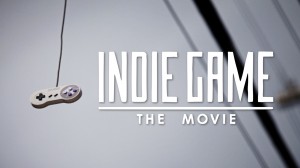 Swirsky and Pajot did corporate commercial work together for five years and that eventually blossomed into doing their first feature. “We thought it would take one year, but it ended up taking two. I can’t imagine working another way, we have a wonderful overlapping and complimentary skill set, ” said Pajot. “We both edited this film, we both shot this film. It creates this really fluid organic way of working. It’s kind of the result of 5 or 6 years of working together. I don’t think you could get a two person team doing an independent film working like we did on day one. It’s stressful at times but the benefits are absolutely fantastic, ” said Swirsky.
Swirsky and Pajot did corporate commercial work together for five years and that eventually blossomed into doing their first feature. “We thought it would take one year, but it ended up taking two. I can’t imagine working another way, we have a wonderful overlapping and complimentary skill set, ” said Pajot. “We both edited this film, we both shot this film. It creates this really fluid organic way of working. It’s kind of the result of 5 or 6 years of working together. I don’t think you could get a two person team doing an independent film working like we did on day one. It’s stressful at times but the benefits are absolutely fantastic, ” said Swirsky.
According to Swirsky, Kickstarter covered 40% of the budget. “We used it to ‘kickstart’, we asked for $15000 on our first campaign which we knew would not make the film, but it really got things going. The rest of the budget was us, personal savings.” The team used Kickstarter twice; the first in 2010 asking for $15,000 and ended up with $23,341 with 297 backers. On the second campaign in 2011, they asked for $35,000 and raised $71,335 with 1,559 backers.
The hard work, dedication, and talent paid off. Indie Game: The Movie was selected to premiere in the World Documentary Competition section at the 2012 Sundance Film Festival winning Pajot and Swirsky the World Cinema Documentary Film Editing Award . “[Sundance] speaks to the independent spirit. It’s kind of the best fit, the dream fit for the film. Just being a filmmaker you want to premiere your film at Sundance. That’s where you hear about your heroes,” noted Swirsky. “Never before in our entire careers have we felt so incredibly supported…They know how to treat you right and not just logistics, it’s more ‘we want to help you with this project and help you next time.’ It was overwhelming because we’ve never had that. We’ve just never been exposed that,” interjected Pajot
They hired a sales agent upon their acceptance into Sundance and the film generated tons of buzz before it arrived at the festival resulting in a sales frenzy. The filmmakers wanted a simultaneous worldwide digital release, but theatrical distributors weren’t willing to give up digital rights so they opted for a self release. “There were a lot of offers, they approached us to purchase various rights. We felt we needed to get it out fairly quickly and in the digital way. A lot of the deals we turned down were in a little more of the traditional route. None of them ended up being a great fit,” said Pajot.
Several people were stunned when this indie doc about indie videogame developers opted to sell their film for remake rights to Scott Rudin and HBO. Pajot explained, “He saw the trailer and reached out a week or so before Sundance. That was sort of out of left field because it wasn’t something we were pursuing.” Swirsky added, “They optioned to potentially turn the concept into a TV show about game development…As a person who watches stuff on TV, I want this to exist. I want to see what these guys do with it.” The deal still left the door open for a more typical theatrical release. However that was only the start of their plan.
“We had spoken to Gary Hustwit (Helvetica). We sort of have an understanding of how he organized his own tours. We had to make our decision whether that was something we wanted to utilize. Five days after Sundance, we decided we would and were on the road 2 weeks after… Before Sundance this was how we envisioned rolling out…[We looked at] Kevin Smith and Louis C.K. and what they’re doing. We are not those guys and we don’t have that audience, but knowing core audience is out there, doing this made sense,” said Swirsky.
They proceeded to go on a multi-city promotional tour starting with seven dates and so far they have had 15 special events screenings of which 13 were sold out! This is separate from 37 theaters across Canada doing a one night only event. They also settled on a small theatrical release in NYC and LA. When talking about the theaters and booking, they said theaters saw the sellout screenings and that prompted interest despite the fact that the film was in digital release. They accomplish all of this with a thrifty mindset. “P&A was not a budgetary item we put aside and if an investment was required, we would dip into pre orders. We didn’t put aside a marketing budget for it,” said Swirsky. Regarding the pre order revenue, they sold a cool $150,000 in DVD pre-orders in the lead up to release of the film. From this money, they funded their theatrical tour.
While the theatrical release was small, it generated solid enough numbers to get held over in multiple cities and provided for vital word of mouth that will ultimately make the film profitable. The grosses were only reported for their opening weekend, but they continued to pack the houses in later weeks.”I don’t look back at the box office. The tour was more profitable than the theatrical…They both have the benefits, having theatrical it gets a broader audience. It was more a commercial thing than box office,” said Swirsky. “We are still getting inquiries from theaters. They still want to book it despite the fact it’s out there digitally,” said Pajot. “We had this sort of hype machine happening. We didn’t put out advertising. Everything was through our mailing that started with the 300 on our first Kickstarter and through Twitter,” said Swirsky. Now the team has over 20,000 people on their mailing list and over 10,000 Twitter followers. In order to keep this word of mouth and enthusiasm going, the filmmakers released 88 minutes of exclusive content – most of which didn’t make the final cut – to their funders, took creative suggestions from their online forum and sent out updates on the games the subjects of their film were developing over the course of the two years the film was in production.
Following the success the film has enjoyed in various settings, Indie Game: The Movie premiered on three different digital distribution platforms. If you were to try and guess what they were though, you would most likely only get one right. While, it is available on the standard iTunes, the other two means of access are much more experimental and particularly appropriate for this doc.
It is only the second film to be distributed by VHX as a direct DRM-free download courtesy of their, ‘VHX For Artists‘ platform. Finally, this film is reaching gamers directly through Steam which is a video game distribution platform run by Valve. This sterling doc is also only the second film to be sold through the video game service, where it was able to be pre-ordered for $8.99 as opposed to the $9.99 it costs across all platforms. This is perhaps the perfect example of the changing landscape of independent film distribution. Every film has a potential niche and most of these can arguably be reached more effectively through means outside the standard distribution model. Why should a fan of couponing have to go through hundreds of films on Netflix before even finding out a documentary about couponing exists, when it could be promoted on a couponing website?
As they are going into uncharted territory, both Pajot and Swirsky avoided making any bold predictions.”It’s just wait and see. It’s an experiment because we’re the first movie on Steam. We’re really interested to look at and talk about in the future. I don’t want to make predictions…I do think documentary lends itself to that kind of marketing though. We’re trying to not just be niche but there is power in that core audience. They are very easy to find online,” said Swirsky.
Just because they are pursuing a bold strategy doesn’t mean they were any less cost conscious. “The VHX stuff, it was a collaboration, so there were no huge costs. Basically subtitles, a little publicity costs from Von Murphy PR and Strategy PR who helped us with theatrical. Those guys made sense to bring on,” said Pajot. “A lot of our costs were taken up by volunteers. If they help us do subtitles, they can have a ticket event, a screening in their country,” added Swirsky.
They also note that a large amount of their profit has been in pre-orders. 10,000 people have pre-ordered one of their three DVD options priced at $9.99, $24.99 and a special edition DVD for $69.99 tied with digital. While the film focused on a select few indie game developers, they interviewed 20 different developers and the additional footage is part of the Special Edition DVD/Blu-Ray. That might explain why it’s their highest seller.
All this doesn’t mean that any of the dozens of other options are no longer usable. Quite the contrary, they have also taken advantage of the Sundance Artist Services affiliations to go on a number of more traditional digital sites. Increased views of a film even if on non traditional platforms can mean increased web searches and awareness and could be used to drive up sales on mainstay platforms.
The real winner though is ultimately the audience. For the majority of the world that doesn’t go to Sundance or Cannes each year, this is how they can discover small films that were made with them in mind. The HBO deal aside, this is bound to be one incredibly profitable documentary that introduces a whole new crowd to quality art-house cinema. “We are still booking community screenings. If people want to book, they can contact us…We are thinking maybe we might do another shorter tour at some point,” said Pajot.
Here’s to the independent film spirit, alive and well.
Update Feb 2013: The creators of Indie Game have written their own case study discussing the many tools and techniques they used. Head over to their website for the full study.
Orly Ravid August 16th, 2012
Posted In: Digital Distribution, Distribution, DIY, Film Festivals, iTunes, Marketing, Publicity, Theatrical
Tags: crowdfunding, DIY distribution, documentary, game developers, Gary Hustwit, independent film, Indie Game, James Swirsky, Kevin Smith, Kickstarter, Lisanne Pajot, Louis C.K., self distribution, Steam, Sundance Artists Services, Sundance Film Festival, VHX, VHX for Artists
The harsh realities of becoming a *responsible* filmmaker
by Orly Ravid
It is difficult to definitively explain what The Film Collaborative (TFC) does in a few sentences. Often, when asked for a company bio for a speaking engagement, we are asked to sum up in a few words, but here is the thing…we do different things for different films and that is what makes this non profit company devoted to independent film distribution different. We are a membership organization and we offer a menu of services that are separately available. For our members, we are largely an educational and informational organization. We will work with any film/filmmaker to provide consultation and educational resources which are included in our membership fees.
We can provide services such as: worldwide festival distribution, worldwide sales, domestic sales, worldwide direct digital, domestic theatrical, limited domestic educational distribution, grassroots / social network marketing services, and contract negotiation services. These are all subject to additional fees so the filmmaker must have significant budget to allow for the labor and expenses incurred and our acceptance depends on the workload currently undertaken by the company.
We also serve in a sales agent capacity with SOME films. Due to this dual nature (educational and service oriented), we are very discerning about the films we take on in this capacity. We can work on any aspect of distribution, but with a strong emphasis on direct distribution being part of your overall distribution strategy. We can connect you with service providers/buyers we think are right for your film, and ones we trust and recommend, but WE NEVER OWN YOUR RIGHTS and filmmakers can cancel the service at any time. This clearly sets us apart from other sales agents and can be confusing to those who are accustomed to typical sales agent arrangements. The deals we make are almost always between the buyer and the filmmaker. The only exception to this are bulk deals whereby doing the deals individually is just tortuous for all involved. We are very boutique in our sales agent offerings, not wanting to disappoint or take on more than we can handle. If we don’t think a title is suited to our strengths and our mission to offer quality films of artistic merit with strong distribution potential, then we don’t take them on for sales representation. Which brings us to merit…
Not all films will have distribution potential, not all films are good, not all films have an audience, or not a significant one. There, we said it! Time and again we see filmmakers willingly, enthusiastically going into debt, either raising money from investors or credit cards and coming to us for help in getting their creations out into the world. Sometimes those creations just won’t have a life out there and no matter what is spent in time or money, a significant audience won’t be found. We drill down into every member’s film in order to give the best assessment, but there are times when the prognosis is not favorable to the kind of success they are seeking.
For members’ films, we remove our personal tastes from the equation and try our best to determine WHO in the world would be enthusiastic for the film and how many such folks are out there? And where are they? And can they be reached given the resources available? When you made the film, were you thinking of an audience? When you came to us expecting the film to: get TV sales, international sales, a nice Netflix fee, a theatrical release, a theatrical even after you did a DIY DVD and iTunes release, were you basing that on another film that is similar? Do you understand the decision making process involved in the buying of films for release? Was any research at all conducted BEFORE the production started? With the amount of information on our site and thousands of others online, there is no longer an excuse for not knowing the answers to these questions well before a production starts.
I am starting to want to be the tough love nursemaid and say we don’t want your babies to be orphans. Filmmakers now have to educate themselves a bit before conception and well before giving birth so they will be able to cover all the rearing their film baby is going to need to claw its way through the mobs of other film babies, their TV siblings, Webcontent cousins, and the rest of their multimedia distraction family. As with conceiving real babies, it is all fun and games until the reality of raising a child sets in. You need to be fully prepared for the long haul.
We have information, we keep up with the current shifting sands of distribution, we receive opportunities because we represent quality films, we have contacts, years of expertise, we’re friendly, we’re not gonna f*ck you over, but we cannot save every film from oblivion nor can we convert every film into a success however you define it. So much of that has to start with you, being clear and honest with yourself, before you say “action”.
photo credit: Adam Foster | Codefor
Orly Ravid August 8th, 2012
Posted In: Digital Distribution, Distribution, International Sales, Marketing
Tags: artistic merit, consultation, Digital Distribution, direct distribution, educational resources, festival distribution, film distribution, film sales, independent film, non profit, sales agent, TFC
European distribution series: OnlineFilm
By Sheri Candler
Here is the second part in a series on European distribution tools. I met OnlineFilm AG CEO Cay Wesnigk, based in Germany, while attending the FERA General Assembly in Copenhagen. Like most people in attendance, he is trying to understand the repercussions and opportunities of the online space to the film industry. His response was to come up with a solution that allows filmmakers themselves to profit and to spread their work to territories outside of their home country by using the internet.
SC: What does OnlineFilm hope to accomplish for European filmmakers and film audiences?
CW: The Onlinefilm.org System is a multilingual marketplace for films and an application service provider for digital distribution and marketing services, owned by a collective of independent producers/ filmmakers. Any rights owner from all over the world can use its technology to offer films as download to own and stream to rent or both.
To reach these goals, we want to strengthen and enlarge our network of national partners that are running the Onlinefilm.org system in their territories and run national websites that use the same technology to develop local markets. Together with our partners we want to develop new tailored ways of marketing by using social media and viral campaigning in their languages and territories and then learn from each other and teach our best practice examples to the film makers to empower them to use the onlinefilm.org system in the best possible way to market their films.
Our motto is “Films are made to be seen” and we want to make it possible for the international audience to access the films they are interested in and find those they did not know existed, helping the makers to find and access their audience.
SC: Do you think the audience is ready to start watching full length films online or on mobile devices?
It should be added to the question, “legally aquired” films. I think it is a proven fact that our audience is watching films on those devices, just go through a train in Europe and you will notice how many people are watching films on laptops and tablets, some even on smart phones. In catalogues of supermarkets, hard disks are offered that have a connection to regular TV and a remote control as well as Network access that make it easy to bring downloaded films to the TV screens. For us, the question is not if there is an audience out there for our films, the question is, is there an audience willing to pay for them?
But there is another angle to your question, a topic for online watching of films is the deceleration of the audience. It is difficult to watch 90 minutes linear programming with no interaction expected on a computer or tablet when the IM Messenger pops up, the Skype rings and your email program reminds you that a new mail has arrived in your mailbox… For that we need to find ways to decelerate our audience. One is the easy connection of the device with the TV set as mentioned above. Leaning back in front of the TV with the mouse out of reach is half of the trick. The other half still has to be developed.
SC: There are already many online streaming platforms for films, many of them are free streaming and ad supported streaming. What is the plan for driving audience interest to OnlineFilm?
CW: A film is a little bit of celluloid and a lot of marketing…
We have experienced that many film-makers do not promote their films once they have upload them in to the system by using the tools and strategies actively that we supplied for them. Some of them do not even link to the films from their own homepages, let alone think about how to promote their films through other channels that would generate audiences for them. Even a good Google ranking for film titles searches that we can supply does not bring the revenue, since for that, the customer has to know that a film exists and must actively search for it. So we have drawn the conclusion that we must act more on the filmmakers behalf to create more sales and such make the option to offer films through the Onlinefilm.org system more attractive. One measure we took was the cooperation with other outlets and websites by offering them tailored Mediatheks for their visitors, creating more outlets and chances that audiences will find a film by chance.
The next step will be to create best practice examples through social media campaigns that will lead to more sales of the promoted example films.
We offer tools to the filmmakers to help them create their own audiences. We offer at the same time a Platform for curators, for the hunters and collectors. They can use the search tools the site offers them to find the raw diamonds. They can browse through the categories, use our full text search in German and English or search for directors or film titles they might already be aware of.
The film of the week section on the landing page of www.onlinefilm.org can change its focus on three different film categorie; Docs, Short- or Feature films, or offer a mixture of all of them (default). With this preselection we want to promote films to people who just drop by our platform with no special film or interest in mind. We often change the selection and try to keep the offer interesting and diverse so every visitor should find something of interest to him and, if not, might be motivated to dig deeper into the catalogue, to find out more about its wealth of topics and genres.
In the second line “the featured films”, the recommendations also changes accordingly once a customer selects where his point of interest lies (docs, short, feature). If someone tells us he is interested in shorts, the site will offer him different shorts. If he tells us he likes docs, he will be offered mainly docs. This is how we try to keep our first time visitors on the site and offer them selected films out of our large catalogue that might be of interest for them. The more we get to know from a visitor on the site, the more we want to tailor the offers made to his interests.
Our national portal Strategy – many different editorial lines
If a visitor decides to “explore the Network” he will be guided to the overview map with all national sites that are active so far. He can then select one of them, where our national Partners have the editorial control, offer national content or content they consider interesting for their fellow country man. Their editorial line is subjective. They will offer the films from their country and others they have found in the system and deem interesting for their audience. We plan to extend the editorial possibilities of the partner pages so the partners will also have their own film of the week and other editorial possibilities to promote certain films on their sites.
By creating sub portals with a special focus, it is also always possible to follow a new editorial line if enough films to justify that are in the system..
Our Greek partners www.greece.onlinefilm.org are the most advanced, they have been with us right from the very beginning of the project in 2007 and they also have made the most out of the technology that onlinefilm.org has offered them so far. As an example, on their editors page, they made their own sub categorisation and such made it possible to browse through the films via topics they have selected on their own.
They also have published the Roviros Manthoulis collection and make it possible to browse through the films of this renowned Greek filmmaker. Both serve as an example for an individual editorial line of a partner portal.
Another example is Ireland.onlinefilm.org. Our Irish partner has chosen quite a ew titles from the system and publishes them on his site. Among them a French/Greek film called IRLANDE: LA MEMOIRE D’ UN PEUPLE about Ireland and its music in the 70s. This film has become quite popular on the Irish website and no one in Ireland would ever have known about this document of Irish folk music if it would not have been uploaded by our Greek partner and found and published by our Irish partner. Also interesting to note is that our Irish partner translated the site into Gaelic language, another way to make the site something special. We use a multi language editor that makes it possible to translate any of our sites in as many languages as necessary.
Since it is always also possible for any rights owner to upload any film from anywhere, we have many films from countries where we do not have a partner installed yet. The more films we get from one country the more active our search for a partner there becomes. We always offer anyone who uploads at least 30 films to get his own Macro shop. This would entitle him also to get a promoter percentage of 8% for any customer that enters the System through his shop. If the relationship develops well and we see the person is active and well connected, he can apply to become a national partner and will then be able to also add other films he has not uploaded into his shop. If he is willing to invest into the cooperation, he can apply for full partner status that would also guarantee him part of the revenues any film uploaded from his territory might generate as a partner percentage. An example of a tailored Macro shop of a German distributor is here: www.filmgalerie451.onlinefilm.org
This is how we slowly built our Network of national partners and built more and more local outlets with their own editorial line.
Some more examples you will find here
www.kurzfilmtage.de/videothek the Videothek of the Oberhausen Shortfilmfestibval, run with onlinefilm technology and with Onlinefilm films
www.freitag.onlinefilm.org A videothel of a German Newspapers Website, run on onlinefilm technolog and with Onlinefilm films
SC: Is this platform mainly for German films or is the focus on all foreign language films?
CW: Any one can upload a film no matter where he or she comes from. We encourage people to upload the film in its original language version and in English. Subtitles are sufficient. More language versions can be uploaded and offered for different self chosen conditions. We even offer a tool ( in Beta) with which one can create subtitles to a film which is uploaded into our system and save and offer them. Subtitles can also be imported into the tool and exported into many formats if produced with the tool. The subtitle tool is designed in a way that a filmmaker could ask a professional or friend in another country to create the subtitles of a film he has uploaded. We are also planning to create a system to allow a person who has created subtitles to opt in and get a piece of the revenue as remuneration for his work, any time the film is watched with his subtitles.
SC: What prices are being asked of the audience to pay?
CW: The price per download or stream is defined by the rights owner who offers the film via the onlinefilm.org system. Over the last 2 year,s the average download price per title has increased from € 2,50 (2008) to € 5,00 in 2010 and to € 6,00 in June 2011 (from a range between € 0.99 and € 16,00). Our bestseller right now costs € 8,50 per download (around $10 USD).
SC: How do you handle payments on the system for all different currencies? Can those not on the Euro still use the OnlineFilm system? How about those who don’t have credit cards?
CW: Right now you pay via Paypal in Euro, that works also with a credi card via Paypal guest status, then you can stream or download the film direct when redirected by Paypal after the payment is done on their server. We are looking into possibilities to offer films in different currencies viaPpaypal right now and hope to offer that kind of service in the near future!
As an alternative, we already offer payment through international bank transfer via IBAN and BIC to our account in Germany. Once the money is sent to our onlinefilm account, the buyer sends us a pdf with the view of the online money order ( screen shot or what the online banking software offers) and we sent him or her the download links via e mail or put the film for streaming into his or her account at onlinfilms under “my films” This sometimes takes a few hours to fulfill but it is better than nothing. So far it has been used mainly by Paypal haters.
SC: What is the revenue split for filmmakers? Are there any fees that have to be paid for the films to use OnlineFilm?
CW: No fees are asked just to offer the film on onlinefilm.org. If you just use the system to host trailers/teasers and use our promotion tool to send free downloads and streams to selected people, but you do not offer the film for payment to a general audience, we would ask you to pay for used bandwith and storage. But there is a free amount of traffic per month, sufficient for trailer hosting of average films, that anyone can use before that happens.
The revenue is split as follows. 51% of the turnover always goes to the producer/ rightsowner. If the rightsowner buys 1.000 shares of the Onlinefilm AG and such becomes co-owner of the system ( option) he can get 5% more which then ads up to 56% . If he sells the film via an embedded shop or Macro shop from his own page and opts in for the affiliate percentage, he will get an extra 8% which then makes his or her revenue climb up to 64% of the sales price (the Affiiliate system still has to be implemented).
SC: What kinds of films are doing well at the moment? documentary, horror, drama? What might these successes all have in common? Do they have notable names, festival accolades, strong coproduction deals that have given lots of promotion, great mainstream media reviews?
CW: We mainly have quite old films on the platform so far, this has many reasons in copyright issues unclear, release windows and power play of the old gatekeepers trying to hinder the films going online all together. Only very few of the films could profit directly from any marketing campaigns.
The films that are successful right now have a campaign behind them or at least some promotion mostly done by the filmmaker via personal website or mailing list. The others are just occasional sales by active seekers for exactly that title. They live on their past time fame.
One very successful 15 year old film Deckname Dennis is a first part of a film called Die Mondverschwörung presenting the same character and using the same technique, that has been released theatrically recently. Through the press the new film received and by creating a social media campaign for the new film that clearly stated its predecessor was available online (Facebook, Youtube, a website, Twitter) we made that film popular again. You might say it went viral and made quite an impressive turnover for its rightsowner. To download the film, the price is 8,50 Euro. We were extremely happy that through a good text the director posted in the blog of a pirate site where the film was also available, we got them to link to our legal offer and take down the illegal offer. Through our link statistics, we can see that many people come from there to us.
SC: I know that the German film industry is particularly concerned about online piracy, how does a site like OnlineFilm help alleviate this concern?
CW: We do not use DRM systems simply because we do not believe in them and we do not want to make it difficult for the customers. Also we do not want to greet our customers as criminals that we do not trust. We follow the principle of “digital rights fair trade” in short “do not bullshit your audience and your audience won’t bullshit you”. Our download is DRM free, whoever buys it will also be able to download the film again, when he needs to. He just needs to log in with his username and it will be in the “my films” section. Since our streaming technology is “dedicated flash streaming” it is not quite as easy to save the stream as with other techniques. The stream is rented for 48 hours and usually cheaper than the download, but it can also be offered solely if people want to better protect their work and do not want it downloaded.
SC: Is there a geoblocking mechanism on OnlineFilm so that if a filmmaker has sold a online sales territory or has a sales agent looking to sell a territory, that territory is blocked? I know that many sales agents ask for a hold back timeframe on titles so they can sell those territories around the world. Is the site mainly to exploit titles that are no longer active in the marketplace? In effect, taking films out of the “library” mode and putting them back out into the marketplace?
CW: At the moment we do not offer geoblocking. Anyone half clever seems to be able to enter any system with a false IP and ridicule these mechanisms. Secondly, we think if a customer wants to legally purchase a film we should sell it to him and not tell him to go elsewhere (namely the pirate sites). We will nevertheless implement an IP scan and geolocation tools in the near future. We have to since the industry seems not to change its ways as fast as it should. We hope to be able to serve the customer by offering a revenue share with the person or distributor who has the rights in the territory where the customer comes from. But this might still take while to program and implement.
SC: Does OnlineFilm do any marketing on the part of the titles? Or is the filmmaker expected to conduct their own marketing strategy to drive traffic to the site?
CW: Onlinefilm does marketing for the site and through the many partner sites also tries to drive more traffic towards the films. We also market some titles that we select via our onlinefilm Facebook page and via the film of the week and the recommendations on the landing page. We have a space on the Kulturserver Network where we can promote individual titles.
When our staff has time left, we also try to encourage links to topic driven films from topic driven websites. We offer marketing support for filmmakers that are open for it, but we ask for a fee if they want a campaign run by us. Then we try to build a social web campaign with them and show them how to, or do the job for them depending on their skills and time or money they want to invest.
This is something we definitely need to put more energy in because far too many filmmakers here do not know how to self promote their films and rather invest their time in making a new one. The revenue made online with many of the films is so far not big enough to encourage distributors or filmmakers to invest a lot of time or money in extra marketing. But since we see that the turnover with films is growing constantly, we hope that this will change and lead to an exponential growth of sales once people will be willing to invest more in marketing once they see the potential.
We are preparing a social media campaigning and online marketing handbook. At the same time we are trying to connect with people who specialize in the craft of online film marketing. We want to develop business models with them that will work for them and the rights owners possibly also on a revenue share basis.
My thanks to Cay Wesnigk for taking the time to talk with us and explain how his company is helping European filmmakers make the shift from a primarily cinema driven distribution model to an online one.
Orly Ravid July 25th, 2012
Posted In: Digital Distribution, Distribution, Distribution Platforms, Facebook, Marketing
Tags: Cay Wesnigk, Copenhagen, download, DRM, European Digital Distribution, featured films, FERA, geoblocking, Germany, Greece, Ireland, online film distribution, OnlineFilm, Paypal, Roviros Manthoulis, streaming

